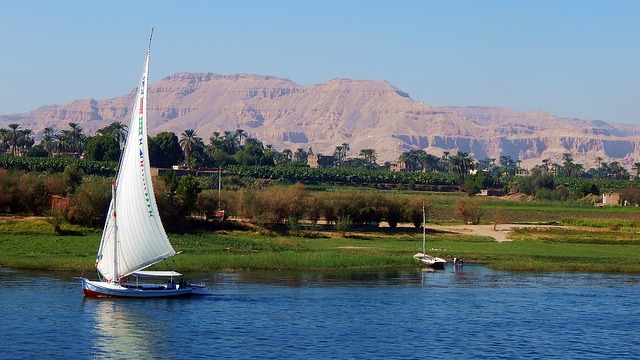
All About The River Nile!
Where Is The River Located?
The African continent is the home of the River Nile, and though most people will associate it strongly with Egypt, the country only houses a minimal portion of this body of water. The River Nile runs through 11 different countries!
The Length Of The River Nile
Clocking in at 6,695 km in length, many have, until recently, believed that the River Nile is the longest river in the world. However, recent surveys are starting to suggest that South America’s Amazon River may be slightly longer. There are also numerous ongoing disagreements about where the Nile started. The one thing that most experts seem to agree on is that the furthest reaches of the Nile are where the small stream in Burundi feeds Lake Victoria.
The River Nile has been divided into the following three sections:
- The White Nile- as a tributary that feeds into the main river, starts at Lake Victoria.
- The Blue Nile- considered another tributary of the Nile, starts in Ethiopia’s Lake Tana.
- The White Nile- this portion combines with the Blue Nile to form the main river in Sudan.
What Are Some Of The Attributes Of The River Nile?
Flowing from south to north, the River Nile starts at the high ground and flows downhill towards the Mediterranean Sea in a northern direction. The river is also home to several majestic waterfalls such as Uganda’s Murchison Falls and Ethiopia’s Blue Nile Falls.
After the Blue and White Nile meet somewhere in Sudan, they develop into a series of six cataracts or rapids. By the time the infamous river reaches Egypt’s Cairo, its progression has greatly slowed and carries virtually no sediment. The river pools sediment on the river bed and forms what many will know as deltas. The River Nile is famous for its Nile Delta, which is a V-shaped delta formation.
If you are interested to know more unique stories about River Nile, you can visit there once. Many travel agencies provide the River Nile cruises with all-inclusive services.
The Importance Of The River Nile
The River Nile has made over 300 million people dependent upon its waters. From ancient times to the modern day, 95% of the Egyptian population lives on or near the banks of the Nile to farm, wash, or drink. Due to the deposited sediment from the river, this area in Egypt also houses the most fertile land. The most vital towns and cities in Egypt are located in the delta region of the Nile, and nearly half of the Egyptian population resides there. Without the abundance of this river, Egypt would be an inhospitable desert land that offers very little in the way of life.
The River Nile And The Ancients
As the greatest ancient civilization on earth, the Egyptians have the River Nile to thank for their success. The ancient Egyptians relied on the Nile for everything from transportation and bathing to farming, animal husbandry, and growing crops.
During the months of June and September, the Nile flooded the region, leaving behind a thick black moist soil that made growing crops ideal. The ancient Egyptian civilisation was able to survive as long as it did thanks to the annual flooding of the Nile.
The Modern Day River
As the Aswan High Dam was built, the Nile River no longer causes territorial flooding. The Nile hasn’t flooded since 1970 when the Dam was officially erected (though its construction began sometime in 1960). Though the Nile flooding was ideal for growing crops and conditioning the land, it also caused many ancient monuments to deteriorate and made it hard for locals to survive based on the floodwaters. Fortunately, the Aswan Dam is a welcome addition to the local landscape.


